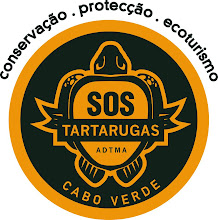The nest started to dip in the middle (indicating movement below) some days ago but each night our checks revealed no little heads poking through, until finally on Wednesday at 21h just as the Rangers arrived at the hatchery the sand trembled and forty seven babies burst on to the surface.
The nest had incubated for 60 days which is average for the start of the season and the little turtles were released shortly after in front of our guests on the turtle walk on Algodoiero - an unexpected bonus for them!

 The next day, in front of a full house, Neal explained our work while Hattie and Ben opened the nest to see what remained. Luckily for everyone there, a further 13 hatchlings were still in the nest, giving a total of 60 turtles from 77 eggs (78% which is a great result).
The next day, in front of a full house, Neal explained our work while Hattie and Ben opened the nest to see what remained. Luckily for everyone there, a further 13 hatchlings were still in the nest, giving a total of 60 turtles from 77 eggs (78% which is a great result). The nest was previously adopted by the Camara Municipal do Sal.
The next nest is due in a few days.
To see hatchlings, adopt turtles, book walks or meet the Rangers visit the hatchery outside the RIU beach between 16h and 18h every day.






No comments:
Post a Comment